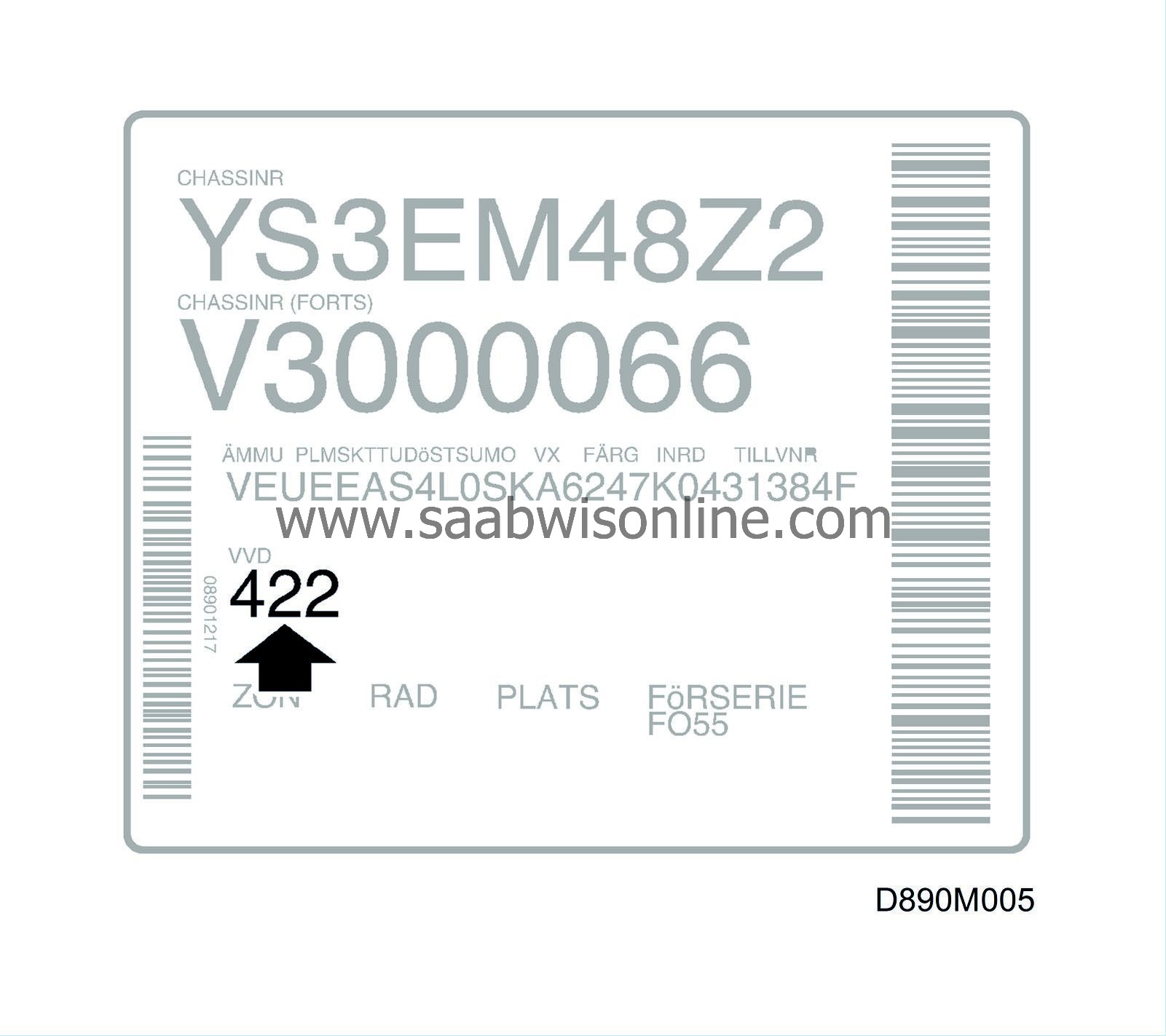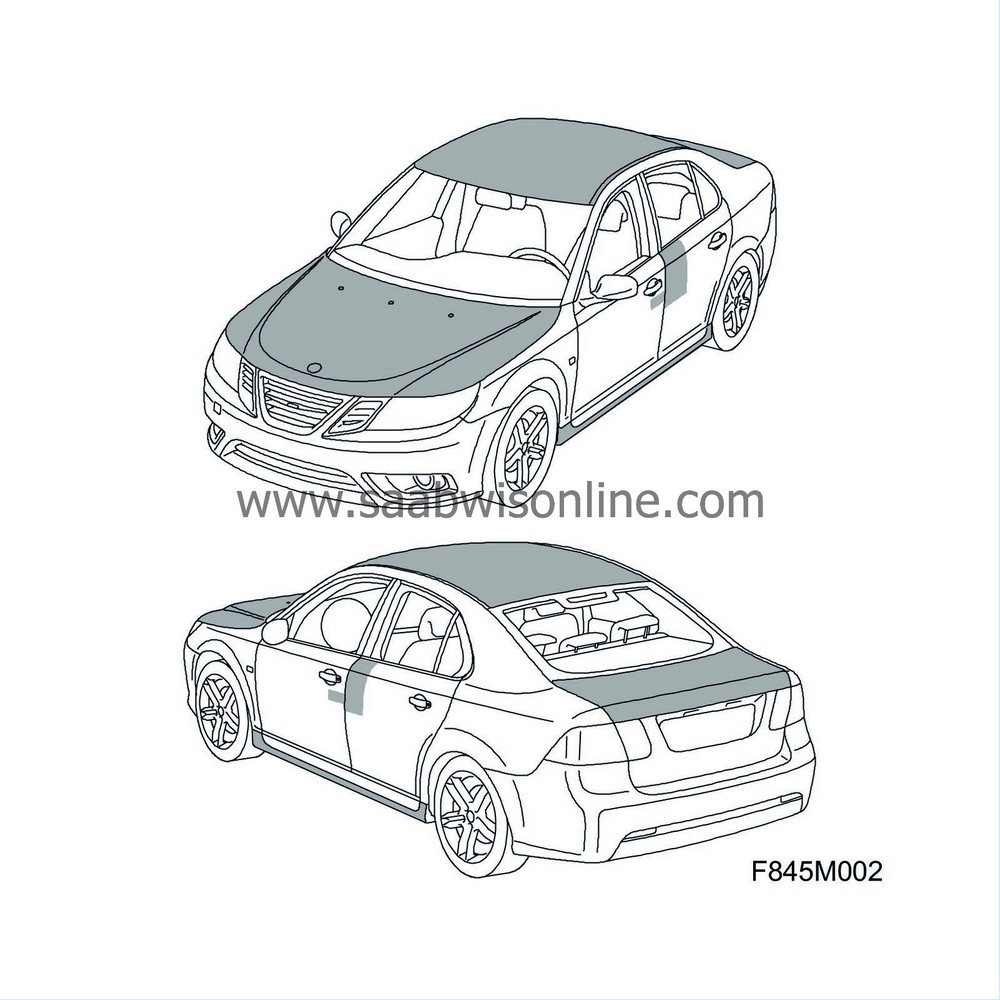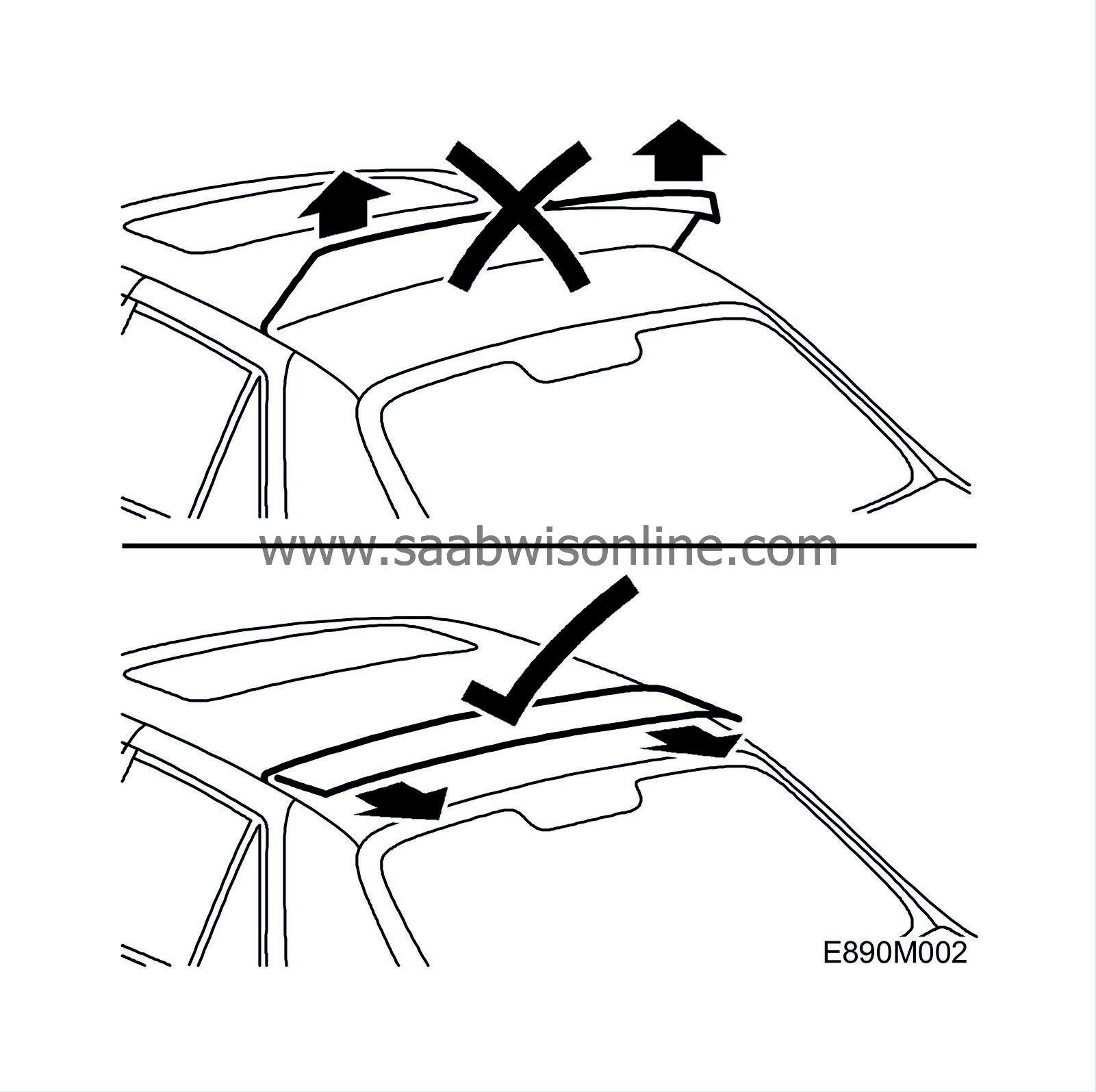Paint protector
| Paint protector |
| General |
The paint protector may be left on the car for a maximum of three months before removal.
The date of manufacture of the car is given on the vehicle card (422 means week 42 day 2).

| Location |

Paint protector is fitted in the following locations:
| • |
the sills (Aero)
|
|
| • |
the boot lid/tailgate
|
|
| • |
the bonnet
|
|
| • |
the roof
|
|
| • |
the driver's side rear door
|
|
| Removing |
The paint protector may be removed with temperatures in the range 0 to +35°C; the most suitable temperature is +20°C. If the body and the ambient temperatures are above +35°C, park the car in the shade or cool it down with water until the body has attained a suitable temperature.
| Important | ||
|
Adhesive residue may fasten to the paintwork at high temperatures. |
||
The paint protector must be removed at least 48 hours before the car is shown to a customer so that any swelling has time to go down.
| 1. |
Loosen the corners of the paint protector. Use your hands only;
no tools
|
|
| 2. |
Hold the paint protector as close as possible to the bodywork.
|
|
| 3. |
Pull parallel to the body surface at an even rate,
do not jerk
.

|
|
| 4. |
Wash the car with water and dry it
|
|
| 5. |
Make sure there is no adhesive residue remaining. If there is, remove it with petroleum spirit (low-aromatic petroleum hydrocarbon) or Isopropanol (Isopropyl alcohol). Use these sparingly and for short periods only.
|
|
When the paint protector and any adhesive residue has been removed, there may be swelling in paintwork. This is normally temporary and will disappear within 48 hours.


